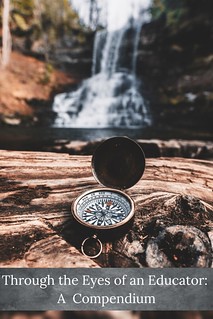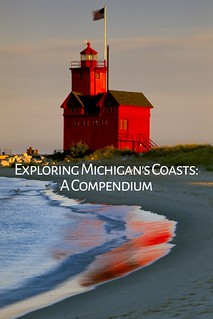Michigan's Small Town Treasures: Mackinac Island
Originally called Michilimackinac Island, there were at least fifty-five spellings to twist newcomers’ tongues around the lyrical name. To make life easier, Michilimackinac was shortened to Mackinac and later, when the British arrived to stake a claim to the fur trade, they began spelling it "Mackinaw" which was in accord with its pronunciation. Eventually the city became Mackinaw and the Island Mackinac, which allowed postal carriers to differentiate between the two. Both are pronounced the same: ("aw" as the last syllable).

Photo: Grand Hotel
There is more than one theory about how the Island was named; one prevailing legend notes the Native Americans called it “place of the great turtle,” because of its elliptical shape, and in their language that translated to Michilimackinac. On the Island you will find a Great Turtle Toy Shop, Great Turtle cakes, and books with turtle themes.
Mackinac Island sits as a precious jewel in mighty Lake Huron near the Straits of Mackinac (the Straits and Bridge are spelled with the “c”). The Island was a sacred place to the early Native Americans who believed that at one time it was inhabited by a great Manitou or god.

Arch Rock geologic formation on Mackinac Island, Michigan. Wikimedia Commons: Jeffness
During the American Revolution, the British retreated from Old Mackinaw (in Mackinaw City) to the Island where they could more easily protect their position in the critical area about the Straits. In 1780, they moved the garrison across the short expanse of water and began construction of Fort Mackinac. Parts of the original Island fort, built more than two hundred years ago, remain standing. Other buildings are reconstructions, but have been either built or restored with attention to historical detail. What you experience today is nearly identical to what the fort looked like in its infancy. United States Army soldiers dress in authentic uniforms and present you the history of their garrison. You will learn of the battles between the British and the Americans for control of the fort. You will also learn of Doctor William Beaumont, the fort’s surgeon, and the famous experiments he conducted on the Island.
Fort Mackinac on Mackinac Island, Wikimedia Commons: Michael Barera
Market Street, one street back and running parallel to Haldimand Bay (where your ferry will deposit you) is steeped in history. The Fur Trade Store or Beaumont Memorial displays bolts of calico and other merchandise that a fur trader from two centuries ago could have purchased for his “outfit.” An outfit was the merchandise taken into the winter camps to trade with the Native Americans for their furs. The store also served up alcohol by the shot, so was a popular spot in those early days. The Stuart House Museum was the original headquarters of John Jacob Astor’s American Fur Trade in the Great Lakes. Robert Stuart and Ramsey Crooks, two of Astor’s deputies, lived there.

During the fur trade, this building housed John Jacob Astor's company store. For a time, the Mackinac State Historic Parks used this building as a memorial to post surgeon Dr. William Beaumont who wrote the book on the digestion system of the human body. Today, it's a musuem to the fur trade which made Mackinac Island the seat of the Northwest Territory. Mackinac Island, Wikimedia Commons: Mary McGuire
The Biddle House was home to Edward and Agathe Biddle and their family. Biddle was a successful trader and merchant on the Island. On one side of the house Edward carried on his business; the room that served as his office had an outside door so that his customers would not bother the family. Today you will find women (Park Staff) still cooking and baking over the open hearth of the kitchen and you can taste the bread they make – much the same as that made by Agathe Biddle when she lived there. The McGulpin House just down the street is less spacious than the
Biddles’ home but more likely similar to what a typical trader resided in during the summer rendezvous.
The Harbour View Inn is a B&B that was actually home to Madame LaFramboise, the Odawa-French fur trader who became famous on the Island. The house was built for her by her son-in-law, Benjamin Pierce, brother to President Franklin Pierce. Madame LaFramboise was born in 1780 in St. Joseph, Michigan, but during her fur-trading days she lived on Mackinac Island. She died in her home there in 1846. She donated a part of her land to the Catholic Church (St. Anne’s) that stands next door to her home.
Like Mackinaw City, there are plenty of places to eat or shop for souvenirs on the Island. You might consider the Village Inn on Hoban Street between Market and Main for lunch. The Whitefish Chowder was excellent, and they serve sandwiches as well as full entrees. Many people indulge in the famous Mackinac Island Fudge. If money is no object, you can stay at the Grand Hotel, where it now costs $12 just to enter the grounds! The Island is pricy, but there are many places to stay that are not quite as damaging to the wallet as the Grand Hotel, including the Harbour View mentioned above.

Photo: The Grand Hotel
No motorized vehicles are allowed on the Island and you generally travel there by ferry. While visiting, you can take long nature walks, get an overview of the Island on a guided horse-drawn tour, or rent bicycles and explore. The Butterfly House is an interesting place to take children. The natural splendor of the Island provides a beautiful backdrop to your historical escape from the modern world.
Two of the modes of transport on Mackinac Island, horse-drawn carriages and bicycles. Mackinac Island, Wikimedia Commons: Bardya
Have you been to Mackinac Island? What did you love most?
Save for later:

Round Island Passage, Mackinac Island. Wikimedia Commons: Mac1island, adapted by Wandering Educators
Julie Albrecht Royce, Michigan Editor, is the author of Traveling Michigan's Sunset Coast and Traveling Michigan's Thumb, both published by Thunder Bay Press. She penned bi-weekly column for wanderingeducators.com, entitled Michigan's Small Town Treasures.






















Dr. Jessie Voigts
Julie - as always, you've found another place that I just can't wait to get to! Thanks!
Jessie Voigts
Publisher, wanderingeducators.com